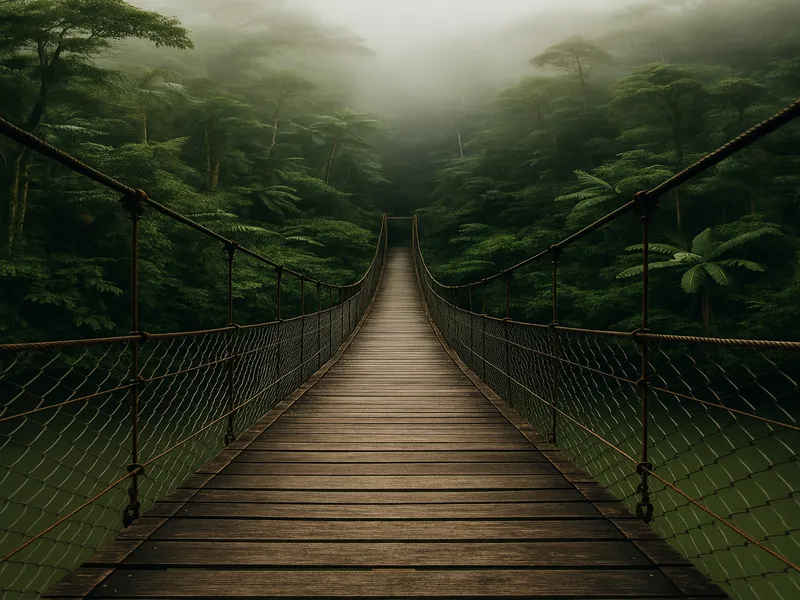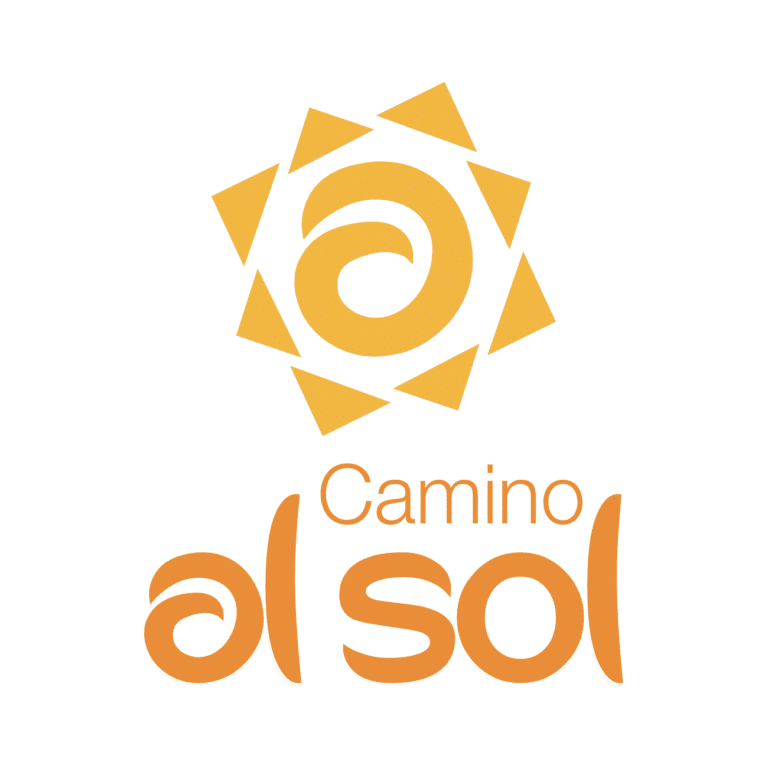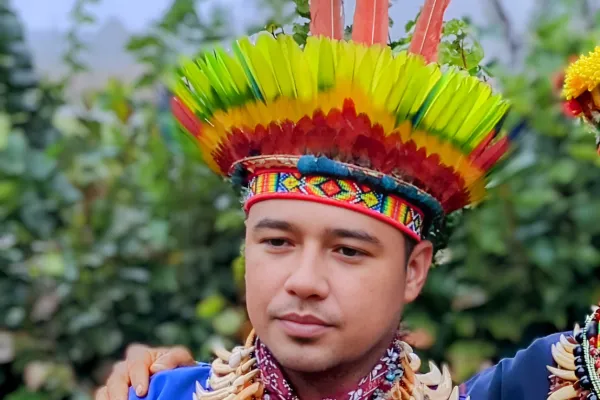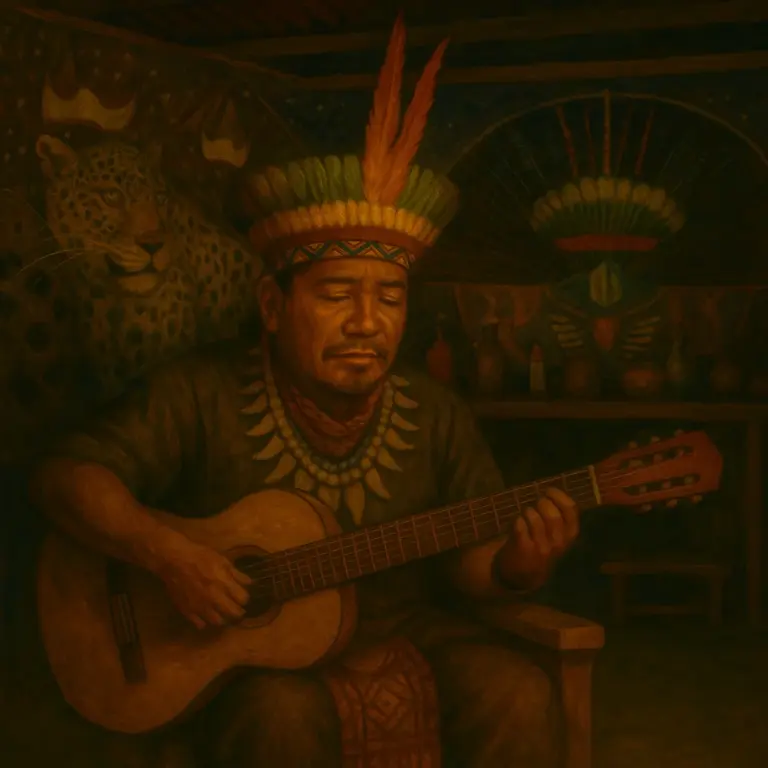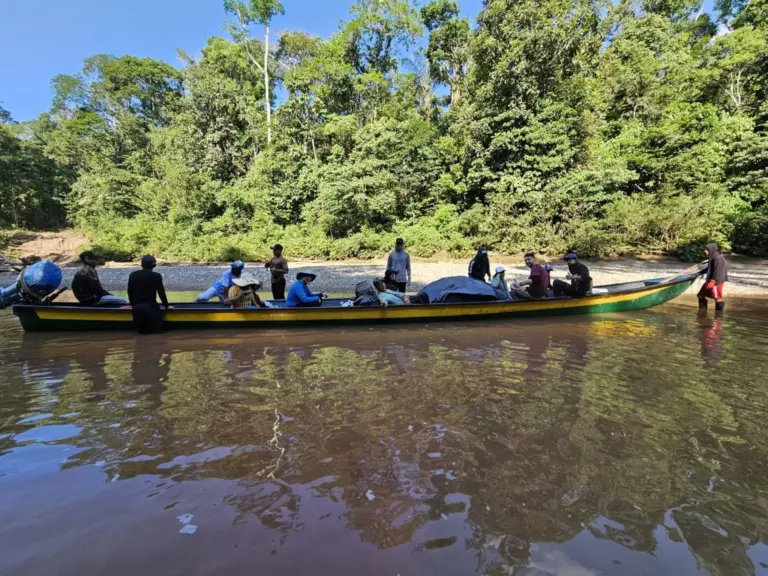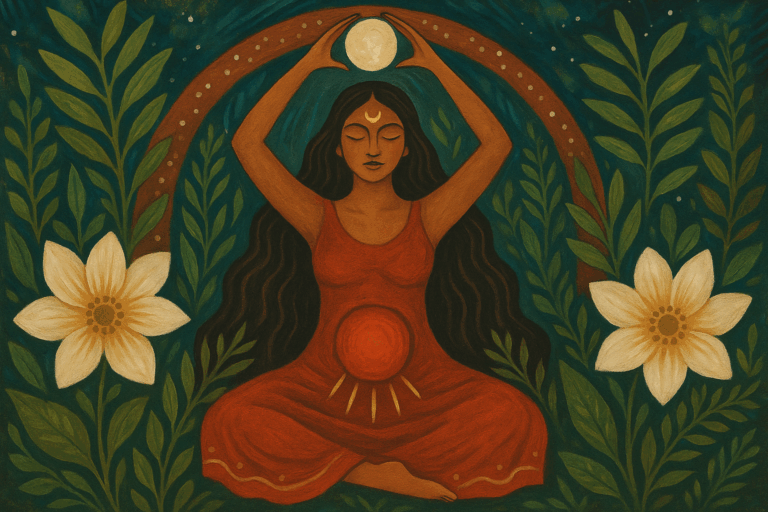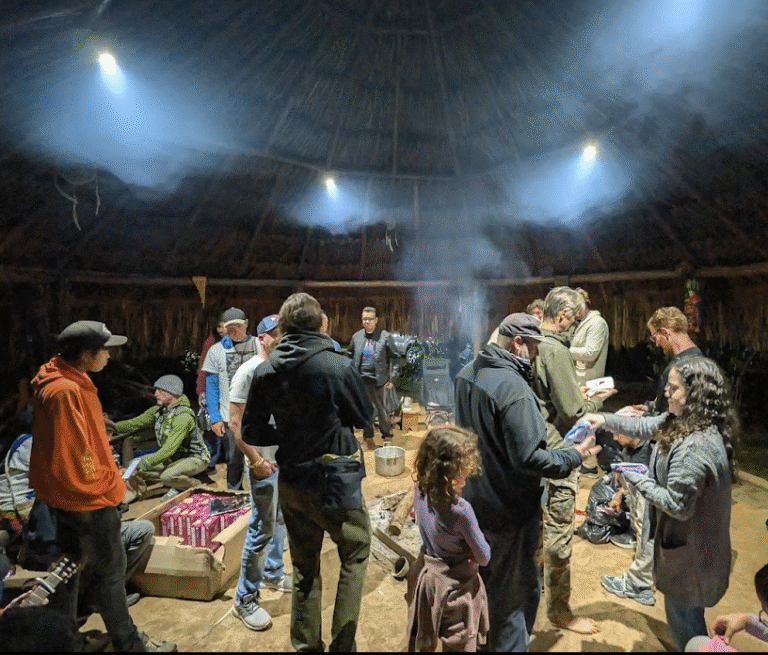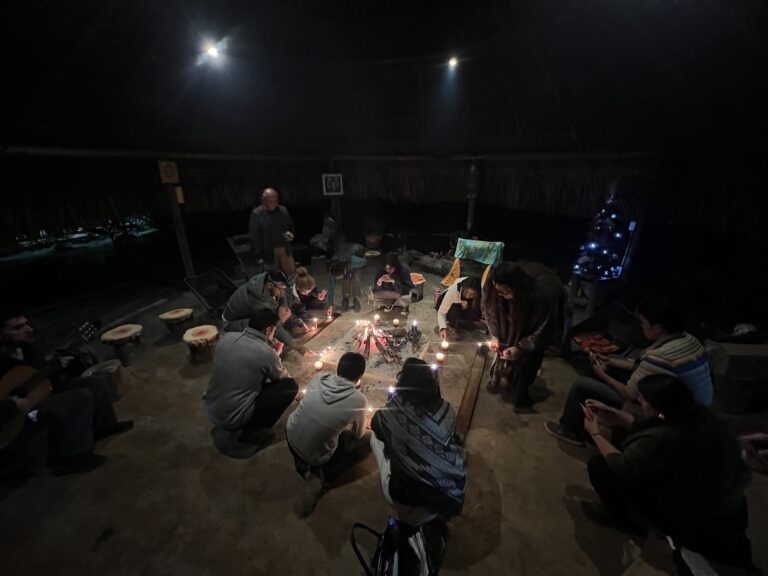Ayahuasca Integration Practices: The Real Work Begins After Ceremony
You’ve sat with the medicine. You’ve journeyed through realms you didn’t know existed. Maybe you cried tears that felt like they came from your ancestors, or maybe you laughed at the cosmic joke of it all. And now? Now you’re back in your regular life, wondering how to make sense of what just happened.
Here’s the thing nobody really prepares you for: the ceremony is just the beginning. The real transformation happens in the weeks and months that follow, in how you weave those profound insights into the fabric of your everyday existence. This is what we call ayahuasca integration — and honestly, it’s where the magic really lives.
Table of Contents
What Integration Actually Means (And Why It Matters More Than You Think)
Integration isn’t some fancy spiritual concept. It’s the bridge between the mystical experience you had in ceremony and the person you become in your daily life. Think of it like this: ayahuasca shows you the blueprint for who you could be, but integration is the actual construction work.
The medicine doesn’t stop working when the ceremony ends. In fact, many traditional healers will tell you that the plant spirits continue their work for months, sometimes years, after you’ve sat with them. But here’s the catch — they need your conscious participation to make lasting change happen.
Without integration, even the most profound ayahuasca experience can fade like a vivid dream. You might remember the insights, but they don’t translate into real shifts in how you live, love, or show up in the world. And that’s honestly heartbreaking, because the medicine has so much to offer when we know how to work with it properly.
The Three Pillars of Real Integration
After years of supporting people through this process, I’ve noticed that successful integration rests on three interconnected foundations. Think of them as the legs of a stool — you need all three for stability.
Pillar 1: The Inner Work (Mind and Heart)
This is where you process what came up in ceremony. And let me be clear — this isn’t always pretty. Ayahuasca has a way of bringing up everything you’ve been avoiding, all the shadow material you’ve tucked away in the corners of your psyche.
Shadow work becomes essential here. Those difficult emotions, traumatic memories, or rejected parts of yourself that surfaced during ceremony? They didn’t come up to torture you. They came up to be healed. But that healing requires your conscious attention and often some professional support.
Journaling becomes your best friend during this phase. Not the Instagram-worthy kind, but the messy, honest, stream-of-consciousness writing that helps you make sense of the swirling emotions and insights. Write about your dreams, your fears, the moments when you feel the medicine still working through you.
Reframing challenges is another crucial skill. When old patterns resurface (and they will), instead of seeing them as failures, try viewing them as opportunities to practice what you learned. The medicine often sends “tests” — situations that invite you to respond differently than you would have before.
Pillar 2: The Body Wisdom (Physical and Somatic)
Your body holds more wisdom than your mind often gives it credit for. During ceremony, trauma and stuck energy get moved around, and your physical form needs support to process and release what’s been stirred up.
Breathwork becomes incredibly powerful here. Simple breathing practices can help you access that ceremonial state of consciousness without the medicine, allowing you to continue the healing work on your own. Even five minutes of conscious breathing each morning can keep you connected to the insights from ceremony.
Movement practices like yoga, dance, or even walking in nature help your nervous system integrate the profound shifts that occurred. Your body needs to literally embody the new patterns you’re trying to establish.
And let’s talk about the dieta — those dietary guidelines that might seem restrictive but are actually profound acts of self-care. Following them isn’t about rules for the sake of rules. It’s about honoring the sensitivity and openness that ceremony created, giving your system the gentle conditions it needs to heal.
Pillar 3: Community and Connection (Social and Relational)
Here’s where it gets tricky. You’ve had this life-changing experience, and now you’re back in a world that might not understand what you’ve been through. Your friends might think you’ve joined a cult. Your family might worry you’ve lost your mind. This disconnection can be one of the hardest parts of integration.
Finding your tribe becomes essential. Whether it’s other people from your retreat, local integration circles, or online communities, you need people who get it. People who won’t look at you funny when you talk about plant spirits or the cosmic download you received at 3 AM.
But here’s the thing — integration isn’t about abandoning your old life entirely. It’s about bringing your authentic self into all your relationships, even the challenging ones. This might mean having difficult conversations, setting new boundaries, or simply learning to hold space for people who aren’t on the same path.
Authentic communication becomes a practice. How do you share your experience without overwhelming people? How do you stay true to your insights while still functioning in the “regular” world? These are skills that develop over time, with patience and practice.
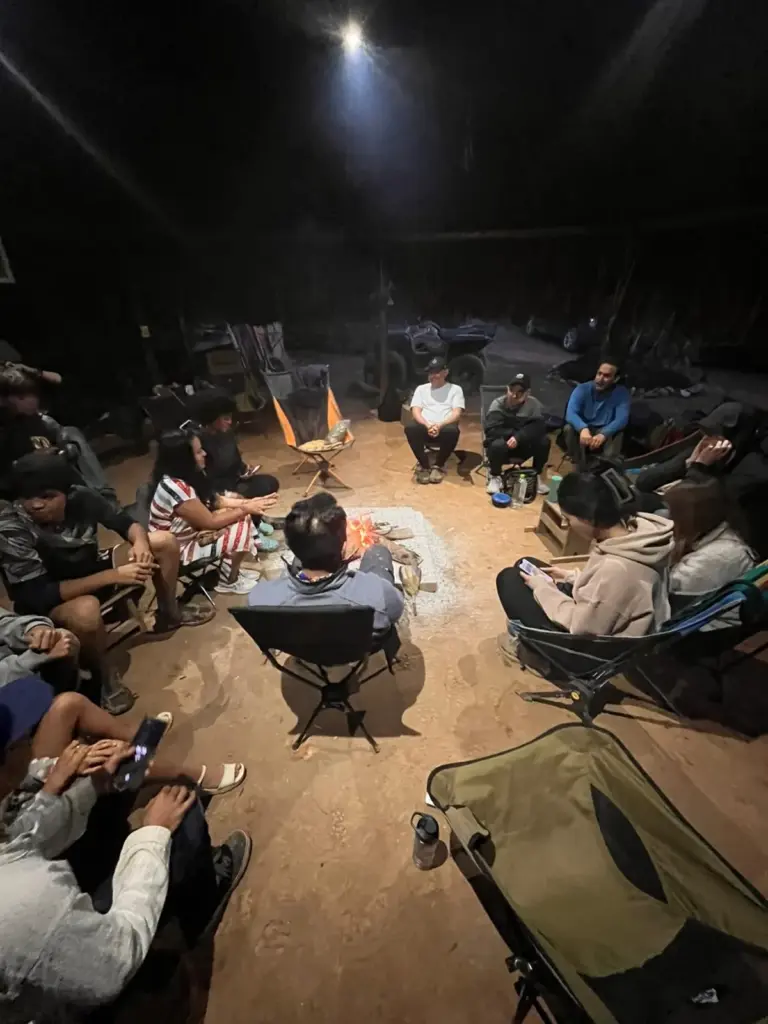
The Integration Timeline: What to Actually Expect
Let me paint you a realistic picture of what this journey typically looks like, because having expectations can save you from unnecessary suffering.
The Honeymoon Phase (First 1-2 weeks): You feel amazing. Clear, connected, like you’ve figured out the secret to life. This is beautiful, but also fragile. Protect this state like you would a newborn — gentle activities, minimal stress, lots of rest.
The Reality Check (Weeks 2-8): The glow starts to fade. Old patterns creep back in. You might feel like the ceremony “didn’t work” or that you’re failing at integration. This is completely normal and actually where the real work begins. Don’t panic. This is the medicine asking you to choose, again and again, who you want to be.
The Stabilization Phase (Months 2-6): With consistent practice, new patterns start to stick. You begin to embody the insights rather than just remembering them. There’s less drama, more steady growth.
The Ongoing Journey (6+ months): Integration becomes a way of life. You develop your own rhythm of practices that keep you connected to your authentic self. The lessons continue to unfold and deepen.
Practical Tools That Actually Work
Here’s what I’ve seen make the biggest difference in people’s integration journeys:
Daily practices don’t have to be elaborate. Five minutes of meditation, a gratitude practice, or simply asking yourself “How can I honor what I learned today?” can be more powerful than hour-long rituals you can’t maintain.
Nature connection is non-negotiable. The plant spirits you worked with in ceremony are part of the natural world, and staying connected to that world keeps the relationship alive. Even if it’s just sitting under a tree in your local park, make it happen.
Creative expression gives your insights a way to move through you. Draw, write, dance, sing — whatever feels authentic. The goal isn’t to create masterpieces but to let the medicine continue expressing itself through you.
Somatic practices help your body catch up with your mind. Yoga, breathwork, massage, or even simple stretching can help release what’s still moving through your system.
When to Seek Professional Support
Look, integration can bring up some heavy stuff. If you’re dealing with trauma, depression, or anxiety that feels overwhelming, please reach out for professional help. There are therapists who specialize in psychedelic integration, and they can provide tools and support that friends and online forums simply can’t.
Licensed Professional Counselors (LPCs) who understand plant medicine can help you navigate the psychological terrain that opens up after ceremony. They can distinguish between spiritual emergence and mental health crises, providing appropriate support for each.
Integration coaches who have their own experience with plant medicines can offer practical guidance for implementing insights into daily life. They understand the unique challenges of this path and can help you develop personalized practices.
The key is finding someone who respects your experience rather than pathologizing it, someone who sees plant medicine work as a valid path to healing rather than something to be “fixed.”
At Camino al Sol, we always keep the door open for continued conversation after your retreat. Ayahuasca integration doesn’t end when the ceremony closes – it truly begins as you return to daily life. Samuel Vélez, with nearly 15 years of experience guiding ayahuasca retreats in Colombia for people from around the world, offers grounded post-ayahuasca support and perspective when life feels unclear. If you ever need guidance – whether after a ceremony with us or in another setting – you can message us on WhatsApp or schedule a short guidance call via Calendly. Sometimes, a simple conversation can help you reconnect with the medicine’s teachings and move forward with clarity.
The Challenges Nobody Talks About
Let’s be honest about what can go wrong, because preparation helps you navigate these waters more skillfully.
Spiritual bypassing is when you use spiritual concepts to avoid dealing with difficult emotions or practical responsibilities. Yes, we’re all one consciousness, but you still need to pay your bills and show up for your relationships.
Integration overwhelm happens when you try to change everything at once. The medicine might have shown you that your job, relationship, and living situation all need to shift, but trying to transform everything simultaneously is a recipe for chaos.
Social alienation is real. You might feel like you no longer fit in your old social circles, but you haven’t yet found your new tribe. This in-between space can be lonely, but it’s also where authentic growth happens.
The integration dip — that period when the initial glow fades and old patterns resurface — can feel like failure. It’s not. It’s the medicine asking you to choose, consciously and repeatedly, who you want to become.
Learning from Traditional Wisdom
The indigenous peoples of Colombia and Peru have been working with yagé for thousands of years, and their approach to integration offers profound wisdom. In traditional contexts, ceremony isn’t a one-off event but part of an ongoing relationship with the plant spirits.
The concept of ayni — sacred reciprocity — reminds us that healing isn’t just about what we receive but what we give back. How can you honor the medicine that helped you? How can you serve the healing of others or the protection of the natural world?
Traditional dietas aren’t just about avoiding certain foods. They’re about creating sacred space in your life, demonstrating your commitment to the healing process, and maintaining the sensitivity that allows you to hear the plant’s ongoing guidance.
Curanderos understand that the medicine continues working long after ceremony, requiring ongoing attention to diet, behavior, and spiritual practice. This isn’t about rigid rules but about staying in relationship with the healing process.
The Science Behind Why Integration Works
Recent research helps us understand why integration practices are so crucial. Ayahuasca creates windows of enhanced neuroplasticity — periods when your brain is more malleable and open to forming new neural pathways. But without conscious effort to reinforce these new patterns, your brain tends to revert to its previous default modes.
Studies show that people who engage in structured integration practices report more sustained benefits from their psychedelic experiences. This isn’t just spiritual theory — it’s measurable, scientific reality.
The concept of “set and setting” extends beyond ceremony into integration. Your mindset, intentions, and environment during the weeks following ceremony significantly influence the long-term outcomes of your ayahuasca experience.
Creating Your Personal Integration Plan
Here’s the thing — there’s no one-size-fits-all approach to integration. What works for your retreat buddy might not work for you, and that’s perfectly okay. The key is developing practices that feel authentic and sustainable for your unique life circumstances.
Start simple. Choose one or two practices that resonate with you and commit to them for at least a month. Maybe it’s five minutes of morning meditation and a weekly nature walk. Maybe it’s journaling before bed and a monthly massage. The specifics matter less than the consistency.
Track your progress not through dramatic transformations but through subtle shifts. Are you responding to stress differently? Are your relationships becoming more authentic? Are you making choices that align with your values? These small changes are where real integration lives.
Be patient with yourself. Integration isn’t a linear process. There will be setbacks, confusion, and moments when you wonder if any of this is real. That’s all part of the journey. The medicine works on its own timeline, not yours.
The Ongoing Relationship
Here’s what I want you to understand: integration isn’t something you complete and then move on from. It’s an ongoing relationship with the wisdom you’ve received, a commitment to living from the truth that was revealed to you in ceremony.
The insights you gained aren’t just personal revelations — they’re invitations to show up differently in the world. How can you bring more compassion to your work? How can you create more authentic connections in your relationships? How can you contribute to the healing of our collective wounds?
This is where integration becomes not just personal transformation but service to something larger than yourself. And honestly, that’s when the real magic happens — when your healing becomes a gift to the world.
Moving Forward with Grace
If you’re reading this, chances are you’re somewhere in your own integration journey. Maybe you’re in that honeymoon phase, feeling like you’ve unlocked the secrets of the universe. Maybe you’re in the thick of the challenges, wondering if you’ll ever feel that connected again. Wherever you are, know that you’re exactly where you need to be.
The medicine you worked with isn’t done with you yet. It’s still moving through your system, still offering its gifts, still inviting you into deeper levels of authenticity and healing. Your job isn’t to force the process but to stay open to it, to create the conditions where transformation can unfold naturally.
And remember — you’re not walking this path alone. There’s a growing community of people who understand this journey, who can offer support and guidance when things get challenging. Reach out when you need help. Share your insights when you feel called. We’re all learning together.
The real ceremony, as the elders say, is life itself. Every day offers opportunities to practice what you learned, to embody the wisdom you received, to become the person the medicine showed you that you could be.
That’s the invitation. That’s the work. That’s the gift.
If you feel called to explore ayahuasca in a safe, traditional setting, learn more about our authentic ayahuasca retreats in Colombia. For those preparing for ceremony or navigating integration, our ayahuasca safety guide offers essential information for your journey.

